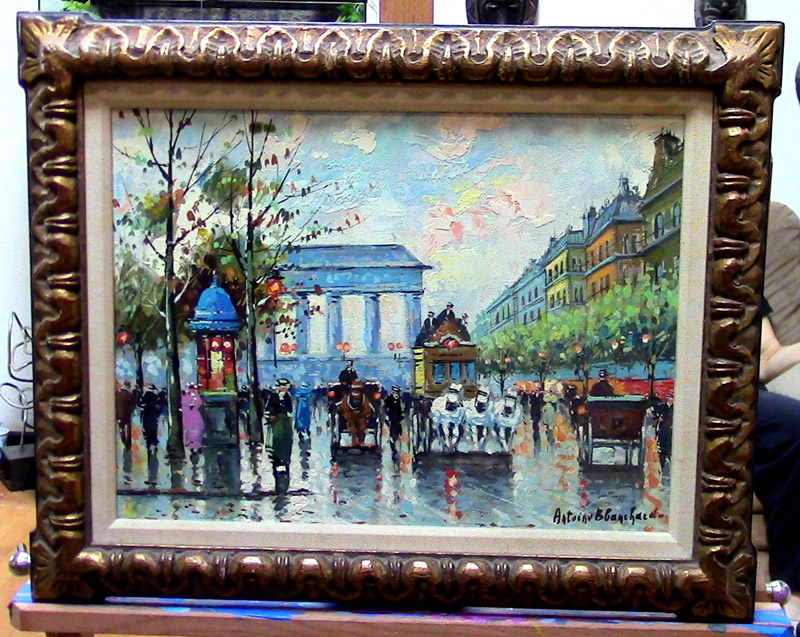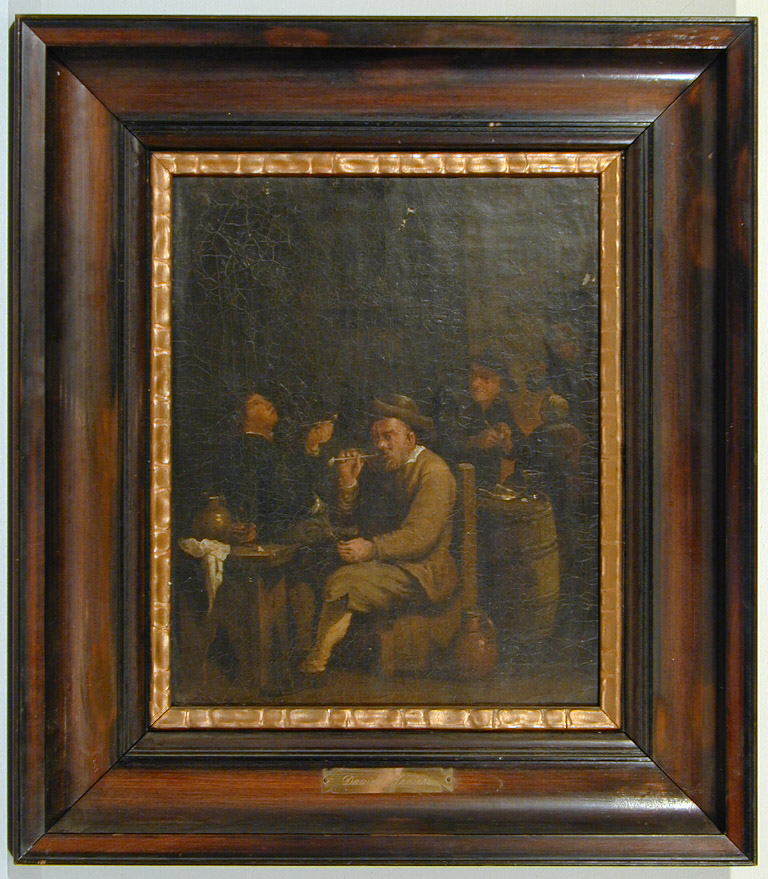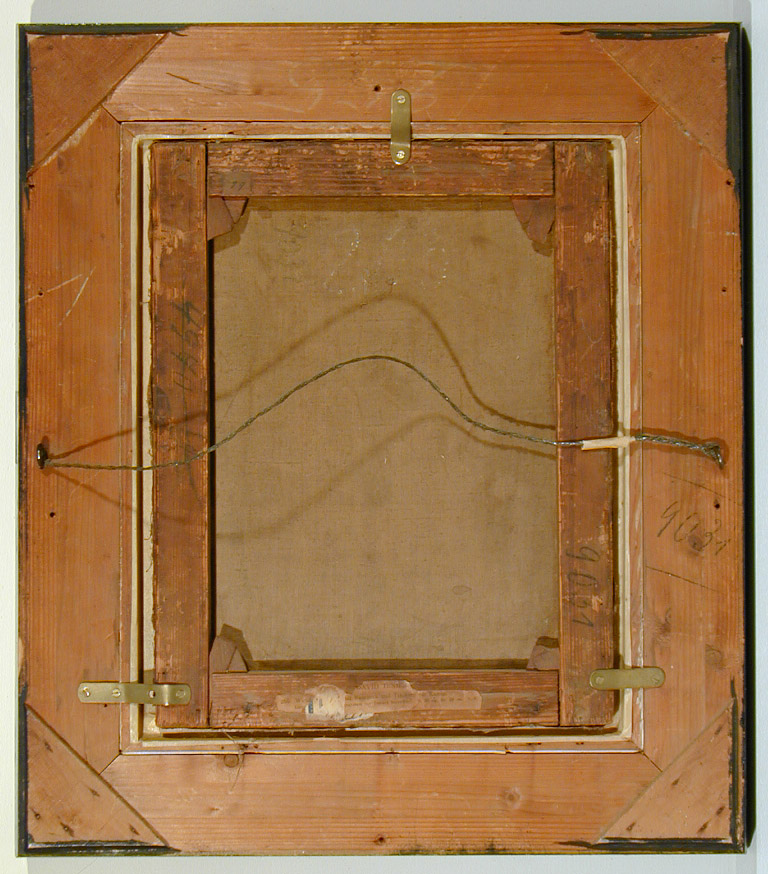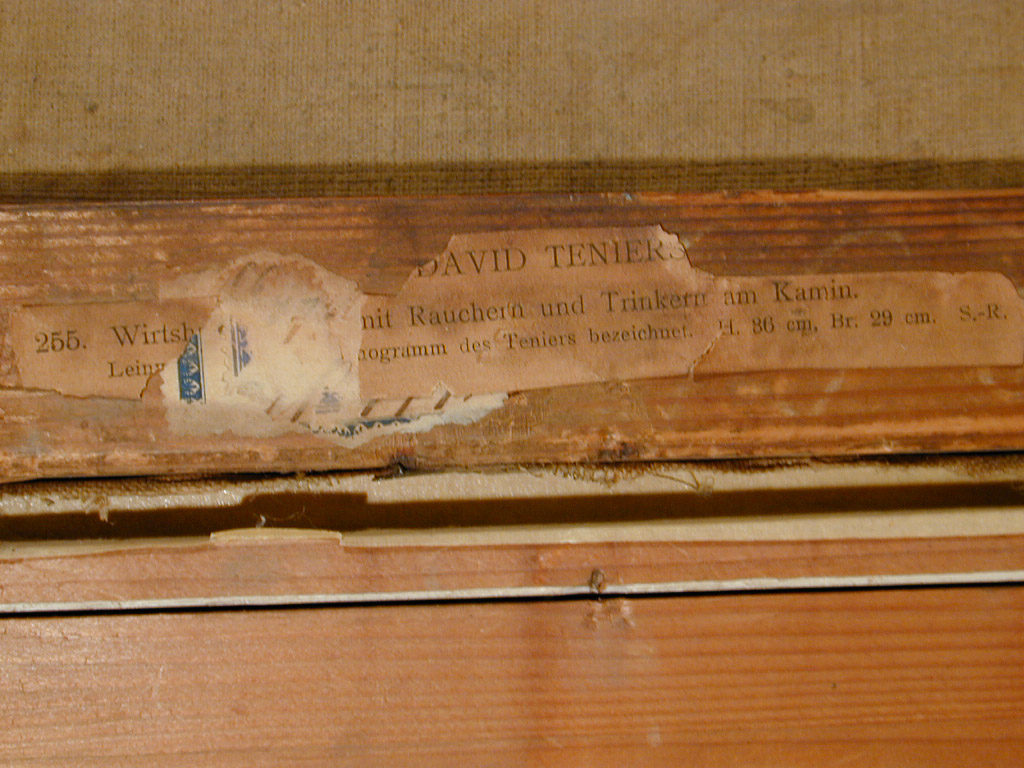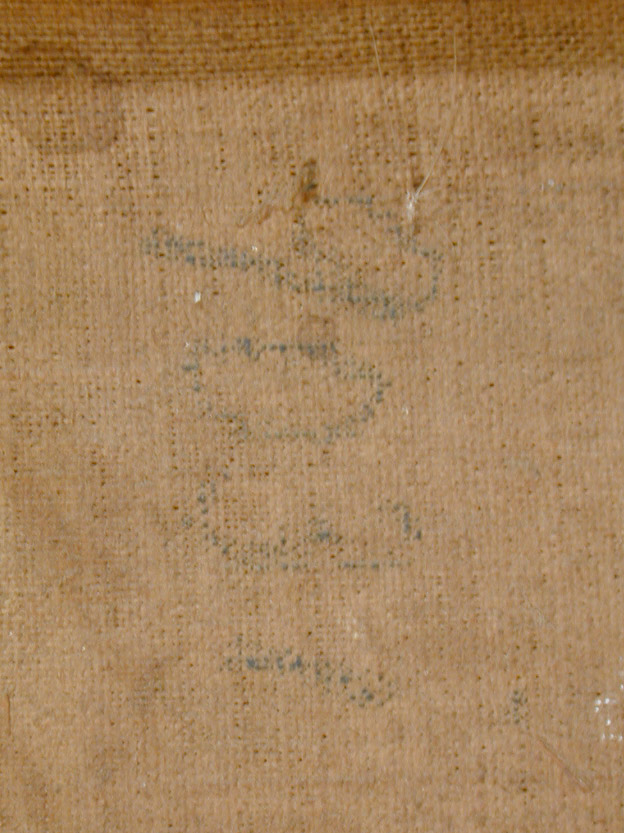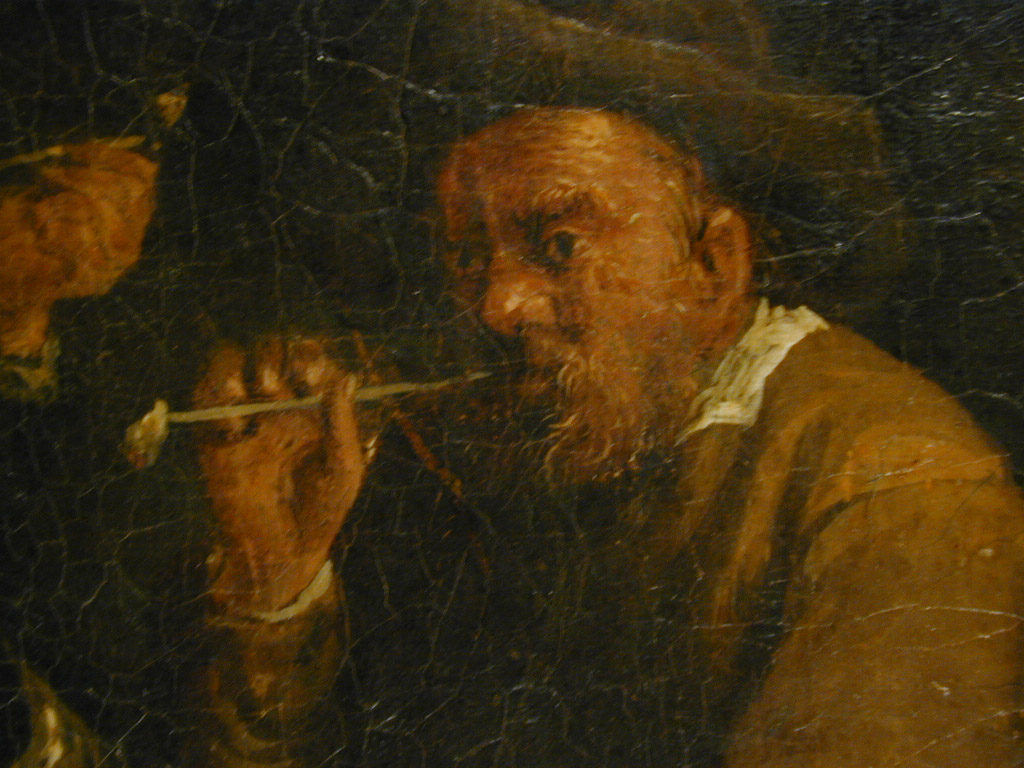I happen to own this piece pictured above — it’s “Rainy Afternoon on the Champs d’Elysee”, an oil on canvas possibly painted by Antoine Blanchard, an often-counterfeited and very famous and popular artists of the 1950s and 1060s.
Verifying his work is extremely hard. He was profoundly prolific, and thousands of his oil paintings now flood the market worldwide.
Please note that the stretcher bars on this piece are AMERICAN — they are stamped “Anco Built” and “Glendale, N.Y.” on the 12″ x 16″ stretcher bars, and stapled, as you will see in other examples.
Many Blanchard paintings are on the same stretcher bars and are the same size, which could serve to support this painting’s claim, but it’s equally possible that there are hundreds of fakes out there all on the same stretcher bars.
Is it a real oil painting? That was my first question, and I took it out into the direct sunlight — not a great idea, but only for a limited few minutes — with a powerful magnifying lens, to examine every brush-stroke, and it is a genuine hand-painted oil painting on Belgian linen, but there are discrepancies — there always are, when you don’t have the original papers.

That’s the signature on several examples, and it checks out — a number of paintings on the market today have the same exact characteristics and, although I do NOT have the paperwork or the provenance for this piece, which was purchased at an estate auction, the similar pieces to this example all have provenance and it checks out perfectly.
Of course, that could merely mean that the fake signatures all agree, and that certainly complicates the investigation. I checked this signature against known museum examples, and as an autograph expert, I can say that there are definite questions, particularly with the “t”, which is generally made like a plus sign, not crossed left to right as this is, but there are always variations in signatures, and this is well within the bounds of “okay”, or “probably ok”, but again, there is always doubt when you don’t have the original papers.
Think of this painting as a sort of “Undocumented Work of Art”, and you’ll get the idea. There isn’t any way today to prove this painting, other than by detective work, and I’ve done plenty of that on this piece over the past three and a half years that I’ve had it.
Dorothy deRivera’s estate was the source of my example. This is a piece from the deRivera estate, which came from the certified appraiser/auctioneer, J.F McGonagle of Highland Park Galleries, Illinois:



And this is what the back of any later Blanchard should look like — the earlier canvases were made on home-crafted stretcher bars with spacers. My example does not use spacers in the inside corners.
My example has the original frame on it, and everything looks like other stuff on the market, so I’m offering my painting — the one pictured at the top of this blog — at the same price — $2,000.00. If you want to resell it, contact me for a wholesale deal.
The age and quality are there, but the size and stretcher bars are unusual for this artist,and there may be problems with the lack of provenance, hence the radically reduced price.
Normally, I’d be inclined to put this out there at $15,000.00 if I had complete confidence that it was genuine, but without an invoice from the artist or a certificate directly from his dealership, it’s impossible to say.
Take a chance? Sure, for this money, it’s worth having a great beautifully painted piece on the wall, regardless of provenance, and in my opinion, it’s as good as any Blanchard out there, regardless of what experts may or may not say about it.
David Teniers Oil on Canvas
Was this painted by David Teniers the Younger? Perhaps, or by one of his apprentices, but in any case, it could only have been painted in his studio and nowhere else — it’s impossible to determine which of several examples was the first and which were the copies, but Teniers turned out paintings like some artists produce prints — by the dozen, and this “Smoker” is one of them.
There were no color photos back then, nor could it have been copied in a museum. The date of painting is certain, somewhere around 1655, so it could only have been done at the studio, where the “original” was available.
It takes a few days to a few weeks to do a copy like this, and can sometimes take longer, so the painter had to have continual access to the “original” from which this was copied.
Often the copies will have one or two details that are differently painted, but it’s all within the scope of generating paintings that can be sold again and again, and that means making copies of copies of copies.
Unrelated Subject Alert!
Oh, here’s a label from my MONEY PIT operation…
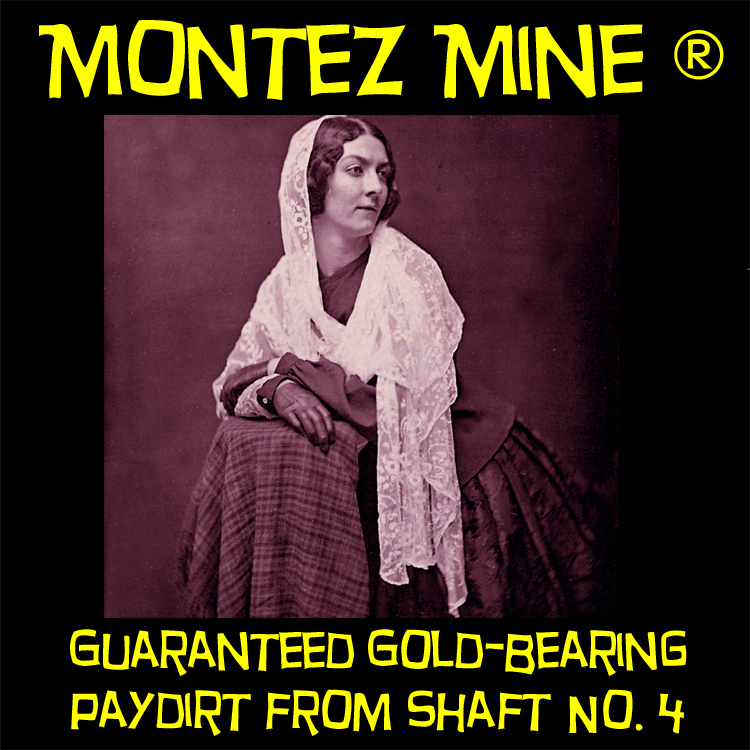
The idea behind the gold claim operation is that you would sell paydirt and panning supplies to groups — youngsters really love to get the gold, and they can keep what they find!
YOU can be the owner of a genuine gold mine! Want to buy the Montez Mine, along with the sales operation for the paydirt? It’s a great business for someone who has a LOT of imagination and can carry off a beginner’s gold-panning class.
Contact me for more information if you’re interested in the mine, and if not, maybe you’re interested in selling the paydirt or using it in panning classes.
See You At The Top!!!
gorby


